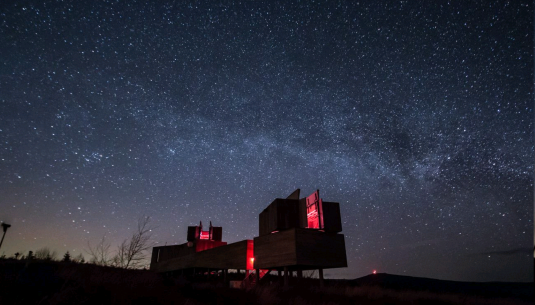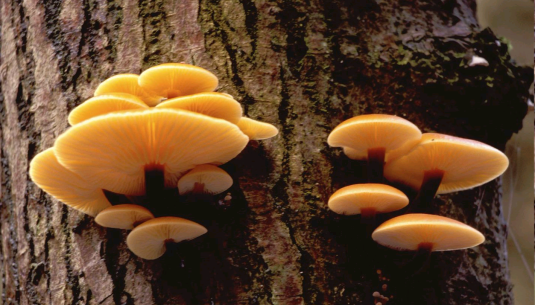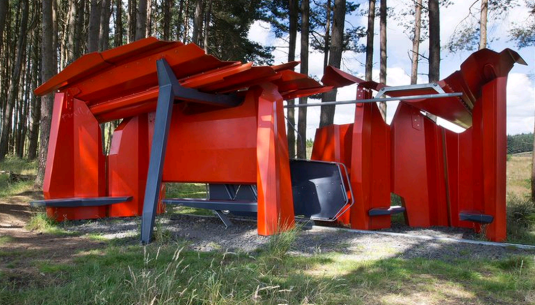
Discover Kielder's Hidden History
Come and find Kielder Viaduct, a dramatic and historic landmark tucked amongst the trees on the edge of Kielder village. The views of the forest and reservoir from the top are spectacular, and you can walk beneath it to marvel at its soaring skew arches.
This short film - Viaduct Views - celebrates the story of the viaduct and features local people and others who love this monument. The film was devised by David Walmsley and filmed by Visual Punch of Wark as part of the Kielder Viaduct Heritage Project, part funded by the Heritage Lottery Fund. With thanks to everyone who took part.
A Gothic spectacular
The viaduct was built in 1862 to extend the toute of the Border Counties railway line into Scotland. But, when the railway company wanted to build it across the River North Tyne in front of the Duke of Northumberland's hunting lodge at Kielder Castle, it is said that he insisted it should reflect the castle's Gothic style. That’s why the viaduct is decorated with battlements and false arrow slits!
Bridging past and present
The railway was built to service the mines and quarries in the North Tyne valley, and soon carried passengers between Hexham and Scotland too. After nearly a hundred years the line closed, but its imprint remains on the landscape and in the minds of valley residents. Today it is a highlight of the 26-mile Lakeside Way and you can enjoy stunning panoramic views of Bakethin Nature Reserve and Kielder Glen from its castellated parapets. It’s also a wonderful place to enjoy our famous dark skies.
Stand on the viaduct in summer and you might be lucky enough to spot an osprey fishing on the reservoir. Click here to hear wildlife volunteer Joanna Dailey talking about the fascination of watching ospreys at Kielder.
Viaduct Ventures - download a fun activity sheet and start exploring!
The Viaduct Ventures activity sheet offers fun suggestions for exploring on, under and around the viaduct at any time. It has two sides, but you only need to take the front page with you on your visit. No pens or pencils are needed - just bagloads of energy and imagination. Try out the activities on the back when you get home or while you're in the Kielder Castle cafe. The sheets can be used in any order, but it will help if you explain to children why the viaduct is there and what's so special about it when you visit. Look out for a different activity sheet here each season.
Forging ahead
Cross the viaduct to find eight remarkable panels along its parapet. The decorative ironwork features were specially made for the viaduct in 2004, inspired by illustrations drawn by local community groups and schoolchildren. A spectacular 'Forge In' event was held at Kielder Castle, where 60 blacksmiths from around the country were involved in making the panels over one amazing weekend. Click here to hear blacksmith Stephen Lunn talking about the challenge of gathering enough equipment for all the blacksmiths to use! Find out more about the Forge In on the Kielder Art & Architecture website.
Here's three of the ironwork panels to whet your appetite (courtesy of Bill Cordaroy), along with some picture from the Forge In event. What will you spot on the other five panels?
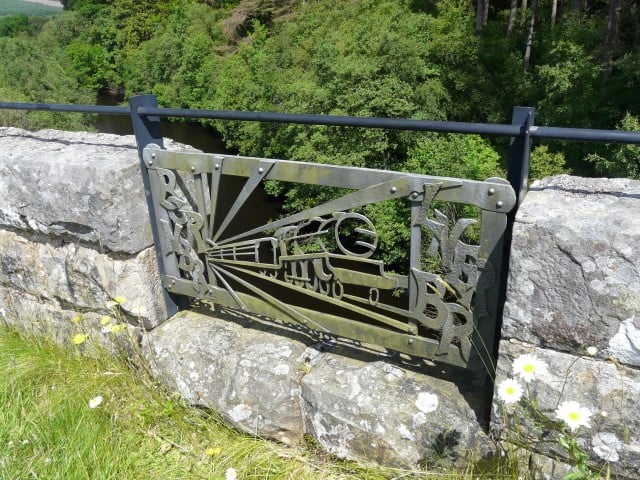
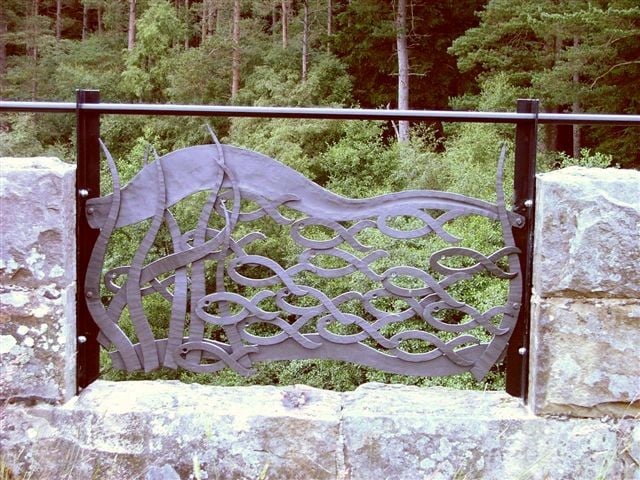
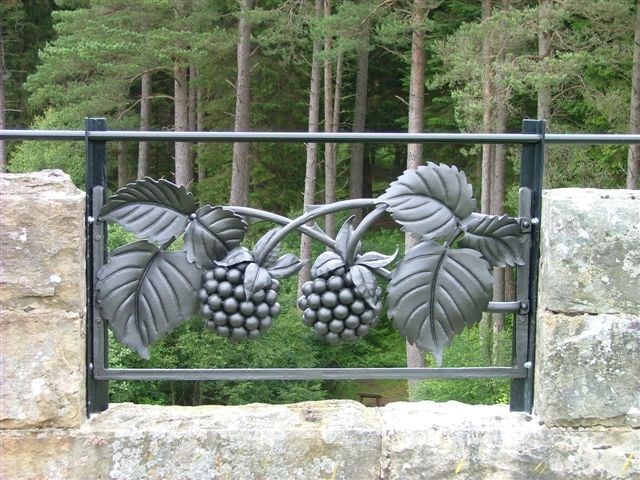
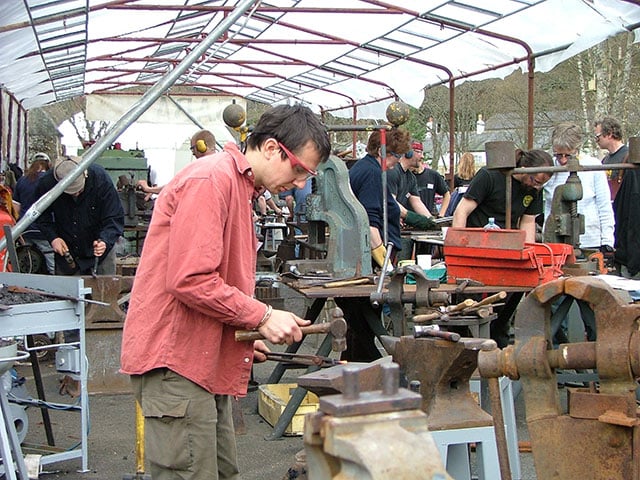
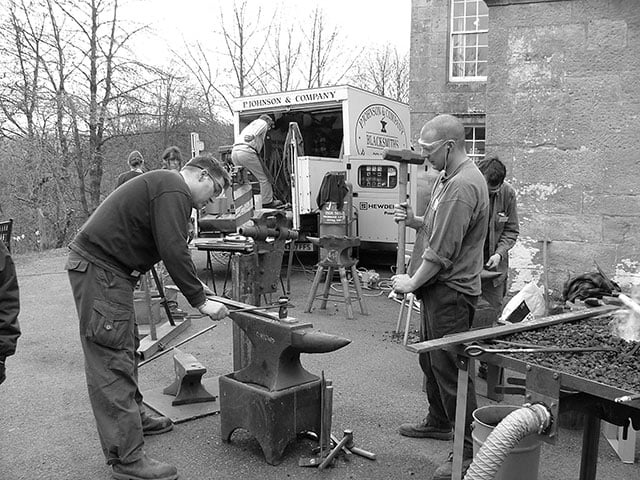
How to get to the viaduct
You can cross the viaduct along the Lakeside Way. It’s just a short walk or cycle ride from Kielder Village and Kielder Castle to join the route at Bakethin Reservoir. There’s also a lovely path that winds underneath the viaduct along the bank of the North Tyne river. Click here to download a 'Visiting the Viaduct' trail map. Look out for new interpretation around the viaduct when you visit, where you can find out even more about this amazing structure and the people and industries that used the railway.
Want to hear a story – or tell us one?
Kielder Viaduct is a hidden trasure for visitors and local people. Click here to listen to Jimmy Hall, of Deadwater Farm near Kielder, recalling children travelling to school by train from Kielder. June Banks' father, the local postman, was born in Viaduct Lodge, which stood beside the viaduct until the reservoir was built. Click here to hear June talking about her father delivering letters to houses and farms now lost under the water.
Do you have a story to tell about the viaduct, village or railway? We’d love to hear your thoughts and memories of this remarkable structure. Was the viaduct the view from your school window, did you holiday in its shadow or is it your favourite place today for watching wildlife?
Share your stories with us
You can add your story to our collection, read other people’s memories, see and post pictures and keep an eye out for upcoming events on the Kielder History Group’s friendly Facebook page.
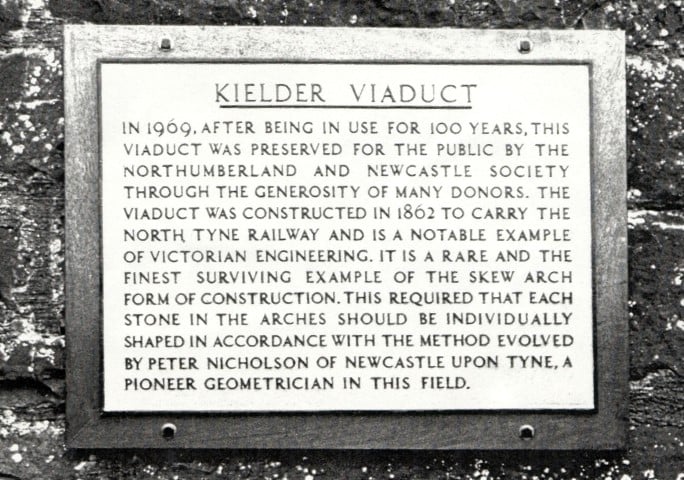
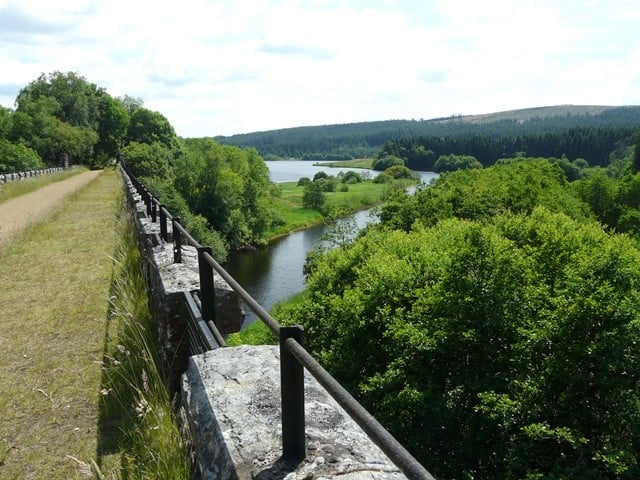
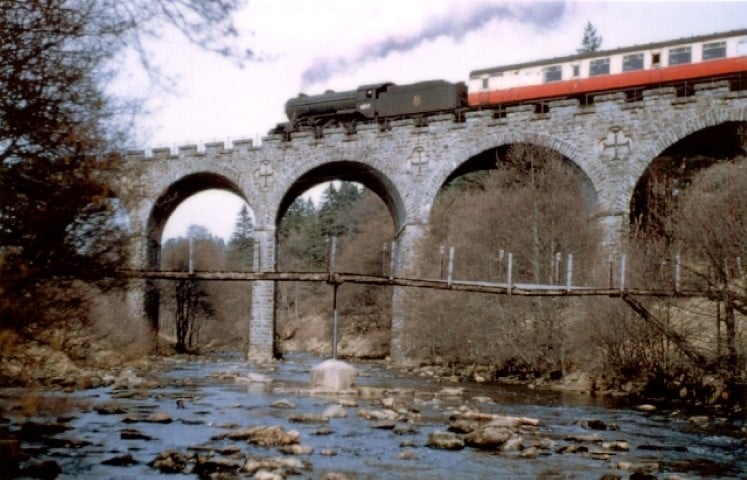
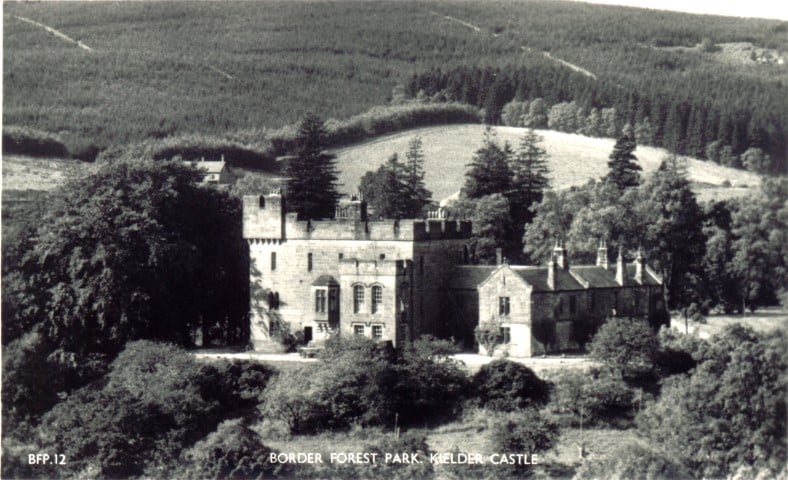
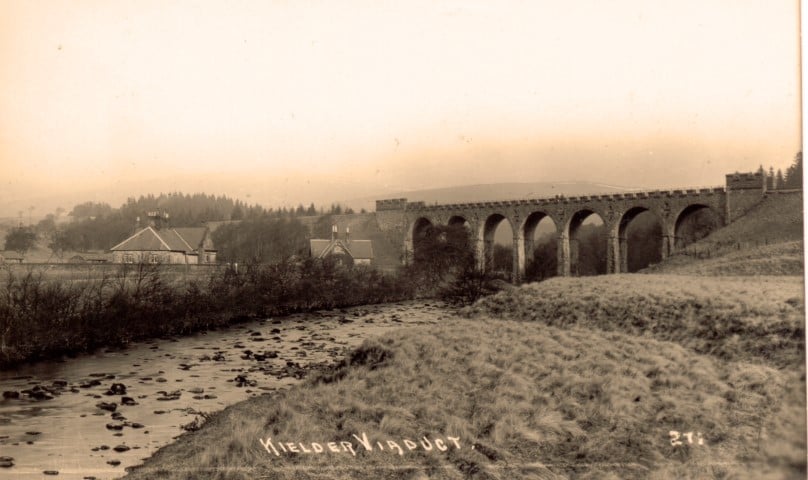
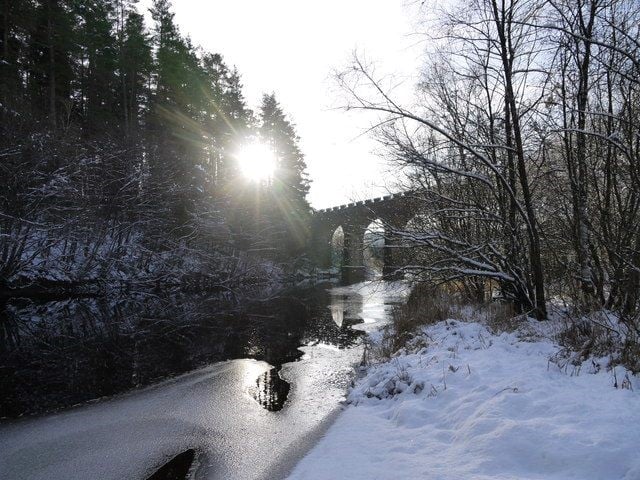
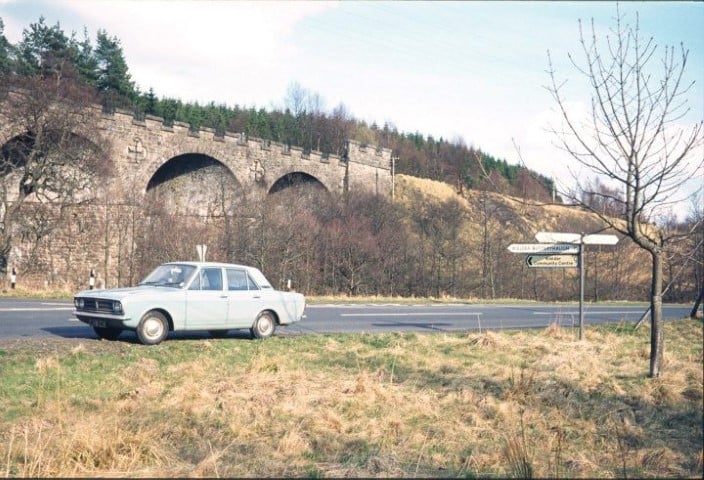
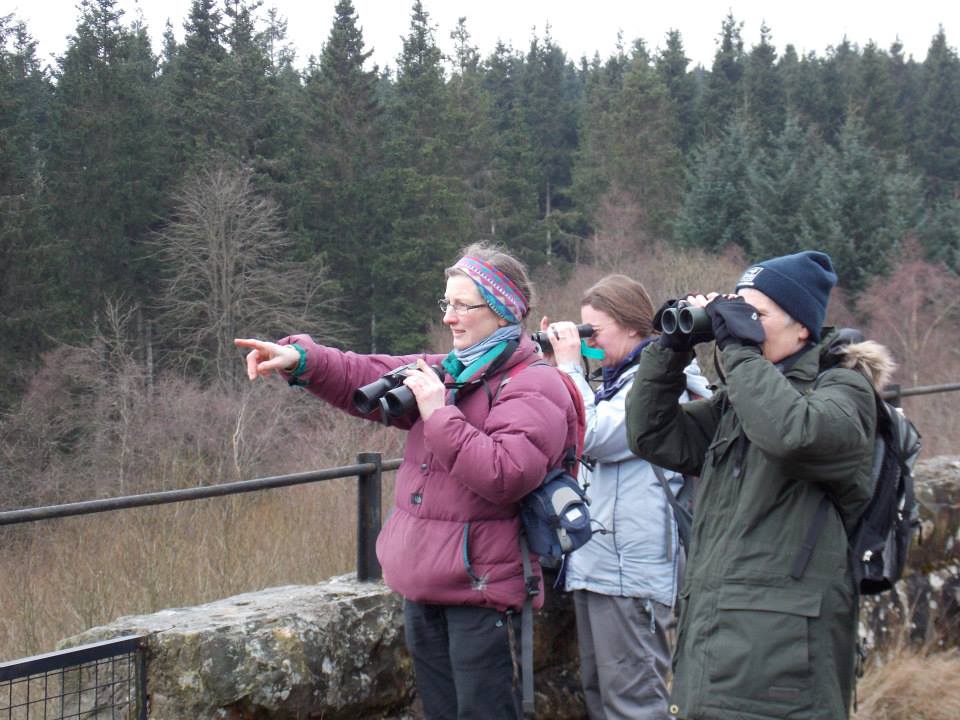
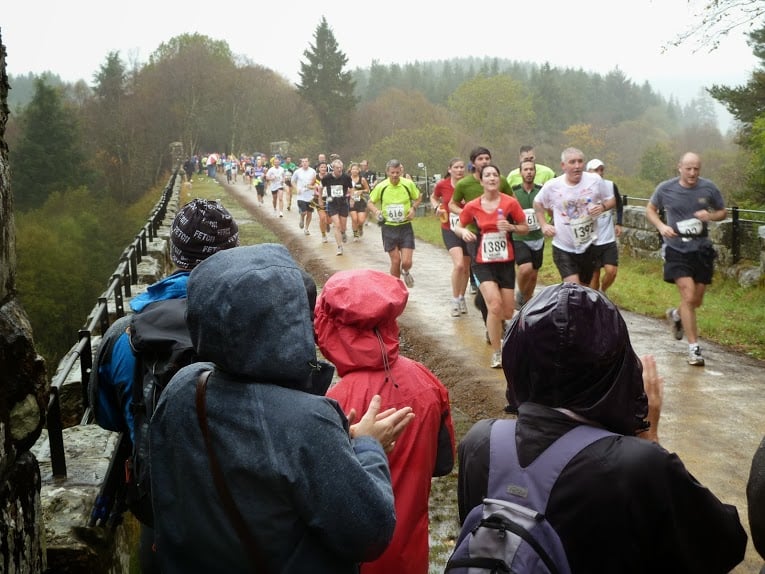
A mathematical puzzle
Did you know that the viaduct was also a mathematical puzzle? It crosses the river – originally also the line of a road – at an angle, which means that the arches had to be angled too. Newcastle architect Peter Nicholson solved the mathematical challenge of how to cut the stones to build this complex structure – and then each stone had to be carved individually by hand! Today, the viaduct is the North East’s finest example of a skew-arch construction.
An explosive suggestion
The railway carried passengers until 1956 and goods until two years later, when the line finally closed. The viaduct’s future hung in the balance and the Forestry Commission considered simply blowing it up! Fortunately, after a long campaign to preserve it, the Northumberland & Newcastle Society stepped in and bought the viaduct for just £1. The Society continues to look after the viaduct today, which is now a scheduled monument.
If you would like to find out more about the viaduct's history, look at our archive catalogue, and visit The Heritage Centre at Bellingham to find out all about the Border Counties railway line.
The Kielder Viaduct Heritage Project is a partnership between Kielder Water & Forest Park Development Trust, Kielder History Group, Northumberland & Newcastle Society, The Heritage Centre at Bellingham and the community. We’re working together to help people discover, learn more about and share Kielder’s heritage.

